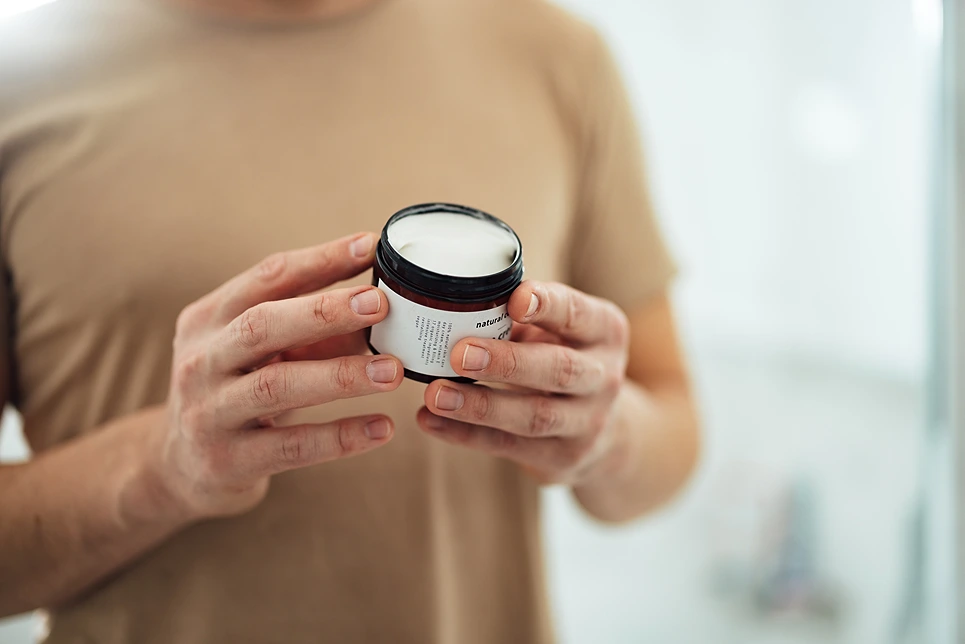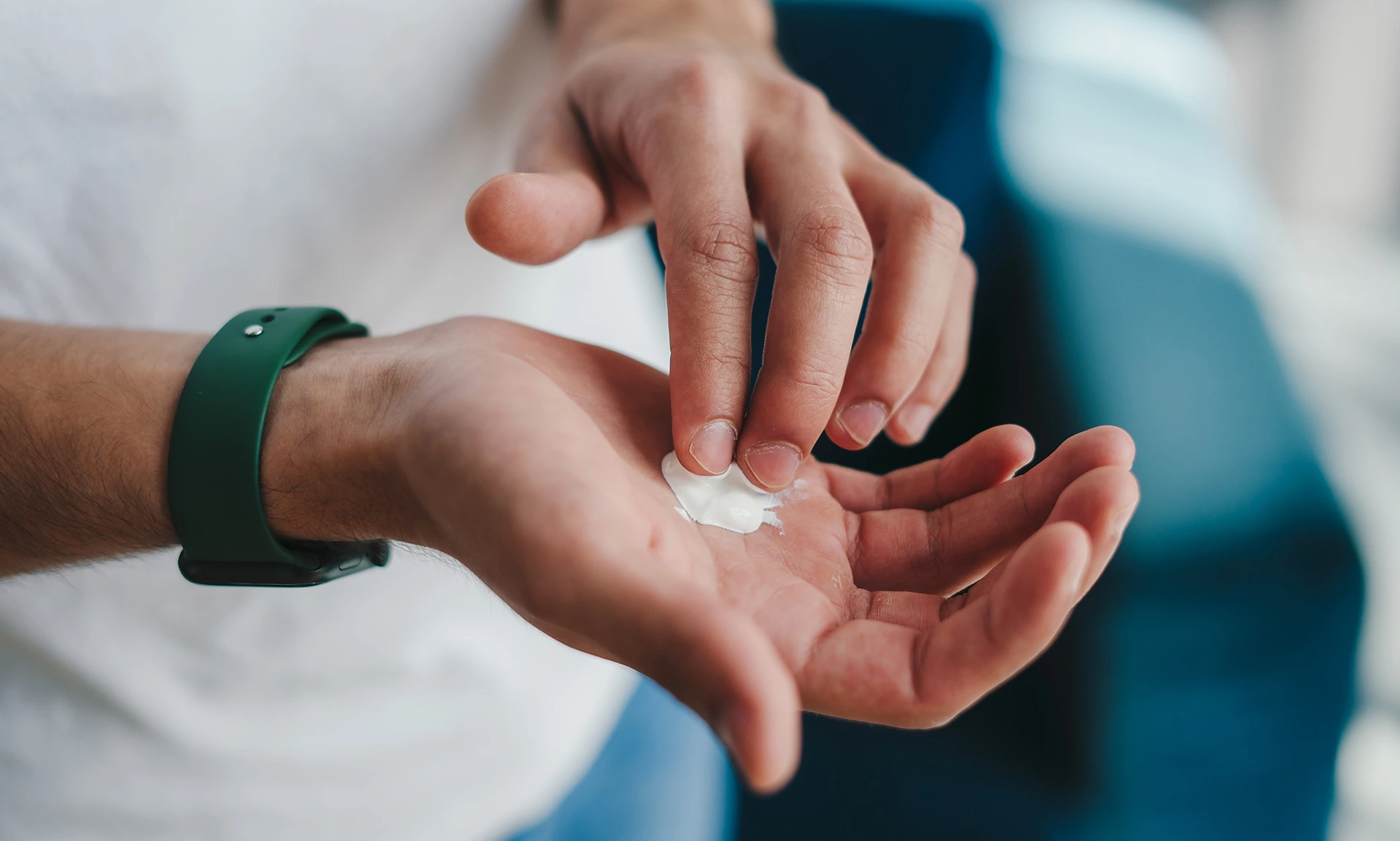Testosterone Cream for Low T: Does It Really Work?
Testosterone is the primary male sex hormone responsible for characteristics like muscle mass, facial hair growth, and deep voice.
But as men age, testosterone levels can start to decline, leading to troublesome symptoms like low energy, poor sexual function, and increased body fat.
If low testosterone is impacting your quality of life, you may be considering treatment options like testosterone replacement therapy (TRT). One common method of TRT is a topical testosterone cream.
But how does the cream work and is it effective? Let’s take a closer look.
Section 1: How Does Testosterone Replacement Therapy Cream Work?

Testosterone cream provides testosterone directly through the skin. But how is it applied and how does it compare to other TRT delivery methods?
How Is the Testosterone Cream Applied and Absorbed?
Testosterone cream is typically applied once daily to areas like the shoulders, upper arms, or abdomen where skin is relatively thin. This allows for efficient absorption into the bloodstream.
To apply, use the fingertips to rub a small amount of cream gently into the skin until fully absorbed. It’s crucial to follow dosage guidelines provided by your doctor or pharmacist. Using too much or too little cream can impact results.
Rotation between application sites is recommended to avoid saturating any one area. It’s also advised to wash hands thoroughly after application to avoid accidental transfer to others through skin contact.
How Does It Compare To Other TRT Methods?
The cream offers some advantages over testosterone injections and gels. As a topical treatment, it avoids the need for injections which some men may find uncomfortable. Creams also tend to be less messy and easier to apply than gels.
However, creams come with a higher risk of accidental transference to partners or children if appropriate precautions aren’t taken. Absorption rate can also vary more compared to injections which provide very consistent dosing.
Overall, the cream offers a convenient topical option but requires care in application. Your doctor can help determine if the cream is the right fit for your lifestyle over other TRT delivery methods.
Section 2: Is Testosterone Replacement Therapy Cream Effective?
Considering using a testosterone cream for TRT? Research suggests it can effectively restore testosterone levels when applied properly. But individual results can vary.
What Does the Research Say?
Numerous studies support the effectiveness of testosterone gels and creams in treating hypogonadism. A comprehensive review analyzed information from 20 clinical studies involving over 2,300 men with low testosterone.
The findings demonstrated that the use of testosterone gels led to significant improvements in sexual function and reduced symptoms often associated with metabolic syndrome (a cluster of conditions that increase the risk of heart disease, stroke, and type 2 diabetes).
What Does This Mean for You?
These findings provide strong evidence that topical testosterone treatments can be a safe and effective way to manage hypogonadism. Studies show that many men experience:
- Improved sexual health: Increased libido, firmer erections, and greater sexual satisfaction.
- Enhanced energy levels: Reduced fatigue and better physical stamina.
- Improved mood: Decreased irritability, better focus, and less depressed mood.
- Metabolic Benefits: Potential improvements in body composition, such as decreased body fat and increased muscle mass.
While individual results may vary, these creams offer a promising choice for men looking to address symptoms of low testosterone and improve overall quality of life.
Important Note: Always consult with your doctor to determine if TRT is appropriate for you. They’ll discuss the potential benefits and risks based on your unique health profile.
What Factors Influence Cream Effectiveness?
How much testosterone gets absorbed from the cream depends on several factors:
- Application site – Areas like the scrotum or inner arms absorb best.
- Application technique – Rubbing thoroughly into the skin improves uptake.
- Frequency/timing – Applying at the same time daily provides optimal consistency.
- Skin condition – Cuts, irritation or excessive hair can impact absorption.
Following usage guidelines carefully maximizes the cream’s effectiveness.
Section 3: Addressing Concerns and Potential Issues

Testosterone treatment like creams does come with some possible side effects and risks. But the true safety profile is still being investigated.
What Are the Common Side Effects of Testosterone Cream?
Local skin reactions are the most common side effect of TRT creams. This includes redness, itching, burning, rash, acne, or dryness in the application area.
Transferring testosterone through skin contact can also cause side effects in partners and children. Finally, some systemic effects like polycythemia (increased red blood cell production) have been reported.
Does Testosterone Cream Raise the Risk of Serious Health Issues?
Some studies have associated testosterone therapy with a higher risk of cardiovascular diseases such as heart attack or stroke. Additionally, there are worries about the potential promotion of prostate cancer growth.
However, research specifically on testosterone cream preparations is limited. More evidence is still needed to determine if creams carry different safety profiles than other TRT forms.
Who Is Not a Good Candidate for Testosterone Cream?
The following groups are generally not recommended for testosterone replacement therapy creams:
- Men with breast or prostate cancer
- Men with untreated severe sleep apnea
- Men with severe urinary symptoms from prostate enlargement
- Men wanting fertility – TRT may reduce sperm production
As always, discuss your full medical history with your doctor before starting any new medications.
Can Testosterone Creams Be Used By Women?
While testosterone is primarily associated with men, women also produce small amounts of this hormone.
In certain cases, women may experience low testosterone levels, leading to symptoms such as decreased sex drive, fatigue, and changes in mood.
Testosterone creams and gels are sometimes prescribed off-label for women to address these issues. It’s important to note that the FDA has not approved any testosterone products specifically for women.
Studies indicate potential improvements in sexual well-being and function. However, long-term safety data on testosterone use in women is still limited.
Section 4: Getting the Most Out of Your TRT Cream
If testosterone cream is the right treatment choice for you, proper usage is key. Follow these best practices.
What is the Typical Dosage of Topical Testosterone?
The prescribed dosage of topical testosterone varies depending on the specific product (cream, gel, solution) and your individual needs. Your doctor will determine the best starting dosage for you. Here’s a general overview of typical starting dosages for different formulations:
- Testosterone gel 1%: 50 mg applied once daily.
- Testosterone gel 1.62%: 40.5 mg applied once daily.
- Testosterone topical solution: 60 mg applied once daily.
- Other testosterone gels and creams: Starting doses may range from 40 mg to 60 mg applied once daily, with the specific formulation influencing the dosage.
Important: Your doctor will monitor your testosterone levels and may adjust the dosage over time to ensure you’re receiving the optimal benefit from your treatment.
How Important Is It To Follow the Prescribed Dosage?
Taking more than directed does not improve results and may increase side effects. At the same time, under-dosing can prevent you from seeing full benefits. Using the cream inconsistently can also lead to unstable testosterone levels.
Follow dosage instructions carefully. Never apply extra cream except as directed by your prescribing doctor.
What Are Best Practices for Safe Cream Application?
Take the following precautions when applying testosterone cream:
- Choose an area of skin without cuts, scrapes or irritation
- Wash hands thoroughly before and after application
- Allow cream to dry fully before dressing or touching the area
- Keep cream away from others, especially pregnant women and children
- Wash any skin that may contact others soon after application
When Should Men Expect To See Results and How Are They Monitored?
Men using testosterone creams for hormone replacement therapy may notice some changes after a few weeks, but it takes longer to see all benefits.
Improvements in energy, sexual function, and other symptoms often become noticeable within 1-3 months. Maximum benefits are typically seen around 6 months.
Have testosterone levels rechecked by your doctor at 3 and 6 months. Dosage adjustments may be needed to keep levels in the target range. Monitoring through bloodwork is important for all forms of TRT.
The Takeaway: Is TRT Cream Right for You?

Research suggests testosterone cream can effectively and safely treat low T when prescribed and monitored appropriately. However, individual responses vary.
The cream offers a convenient topical option but requires care in usage and application technique. Discuss all forms of TRT thoroughly with your doctor to determine which method best suits your needs and lifestyle.
Finding the right treatment takes some trial and error. But restoring testosterone levels can have immense quality of life benefits.
If you’re experiencing low T symptoms, the first step is having a candid conversation with your healthcare provider about whether TRT in any form makes sense for your health.

